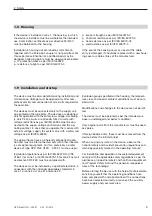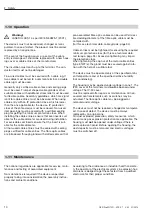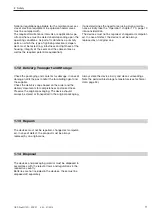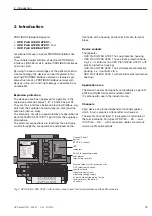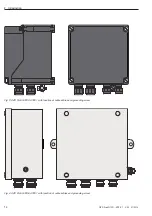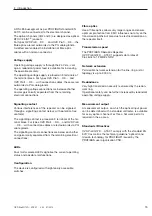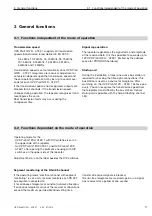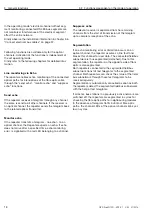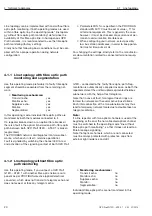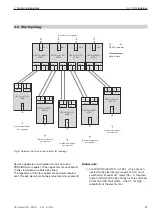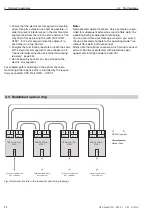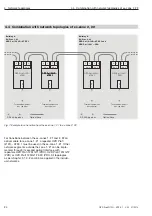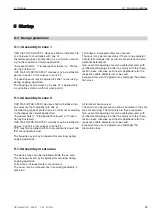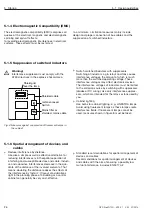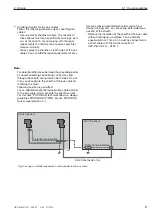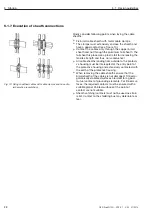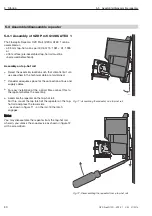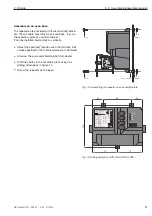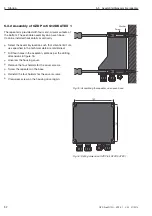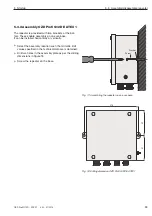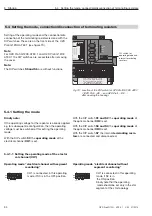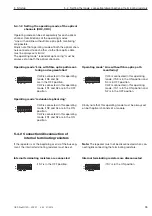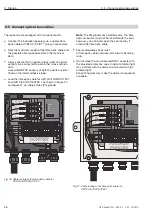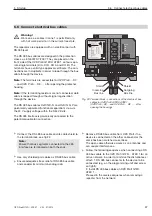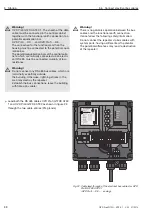
4.3 Redundant optical ring
23
4 Network topologies
OZD Profi G12D... ATEX 1 V. 03 07/2014
This network topology presents a special form of line -
topo logy. High operational safety of the network can be
attained by “closing” the optical line.
Monitoring mechanisms:
Transmit echo:
yes
Monitor echo:
yes
Suppress echo:
yes
Segmentation:
yes
Interruptions of one or both optical fibres between two
repeaters is recognised from the OZD Profi G12D...
ATEX 1 and the ring becomes an optical line.
If the repeater breaks down, only terminal equipment or
the RS 485 segment connected to this repeaterare uncou-
pled from the ring. The rest of the network itself remains
functional as a line. Error reporting is done by the LED of
both the OZD Profi G12D... ATEX 1 connected to the
faulty fibre optic path and through its signalling contact.
Segmentation is automatically cancelled as soon as both
the repeaters recognise the uninterrupted segmented
fieldbus subnetwork with the help of test telegrams. The
line again closes to form a ring.
Kindly note:
Following basic conditions must be complied with for
proper operation:
Operating mode “redundant optical ring” must be
set on both the optical channels of all OZD Profi
G12D... ATEX 1.
All repeaters in the course of ring must be con-
nected to each other via fibre optic lines.
There should be no RS 485 bus cable during the
course of a ring.
Parameter MIN T
SDR
described in the PROFIBUS
standard EN 50170 must be set at value < 11 for
all terminal equipment. This is generally the case,
however, it must be checked at occurrence of
substantial communication interferences.
When configuring your network, select possibly
low bus station addresses, in order to keep poten-
tial master time-outs small.
If there is redundancy (e.g. line breakage), it results
into a switching time, during which correct data trans-
mission may not be possible. For ensuring shock-free
overbridging of the application, it is recommended to
set the number of repetitions (retry) of the telegram at
minimum 3 for the PROFIBUS master.
For ensuring shock-free switching back of the optical
line to the optical ring after eliminating the fault, there
must be no telegram at this point in the network. This
state occurs if a master addresses a device, whose
address is configured but is not actually available. The
master tries to address this device in cycle and waits
for a response (“GAP query”) maximum up to expira-
tion of the configured slot time. OZD Profi G12D...
ATEX 1 recognises this state and closes the optical
line in the middle of this query sequence to the optical
ring.
Two configuration requirements are produced for the
redundant optical ring:
– The value of parameters
HSA
(Highest Station
Address) must be set such for all terminal equip-
ment, that between the bus address 0 and the value
HSA at least one address in the network is
not
allo-
cated by a bus station, there is at least one address
gap. You can get this address gap simply by setting
the value of the parameter HSA by at least one high-
er than the highest station bus address occurring in
the network.
Attention:
If this requirement is not and/or cannot
be fulfilled any longer, the optical line cannot be
closed for a redundant optical ring after a segmen-
tation.
The fault message (LED and signal contact) of the
two concerned OZD Profi G12D... ATEX 1 is not
taken back after rectification of the fault.
– The
slot time
must be set at double the value than
for a non-redundant network. Other information is in
chapter 6, “configuration”, page 51.
Kindly refer to the manufacturers documentation for
change in settings of the terminal equipment or con-
figuration software.

